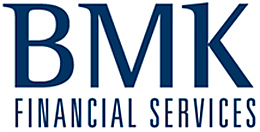If you are looking for a way to bolster your retirement savings, then investing in business premises through your self-managed super fund may well be the answer.Since 2007, SMSFs have been able to borrow money to fund the purchase of assets including property, shares and managed funds through limited recourse loans.i
Limited Recourse Loans
Limited recourse loans hold particular advantages for SMSFs, as the lender only has a claim over the single asset supported by the loan should the fund default. However, lenders may ask trustees to provide personal guarantees. The loan can be obtained through a bank or even a related party provided all transactions are conducted at arm’s length.ii
Such borrowings require high levels of compliance so it’s important to get expert advice and keep comprehensive records.
For example, you will need a separate trust to hold the asset – this trust goes by various names including security trust, bare trust, installment warrant trust or debt installment trust.iii While the trustees of the SMSF receive the beneficial interest in the asset, such as a rental property, the legal ownership rests with the separate holding trust.
There are both advantages and disadvantages in including your business premises in your SMSF.
Advantages of SMSF
By leveraging your property within your SMSF, you are giving yourself an opportunity to further grow your retirement savings.
When the rental income from the property is paid into your SMSF, your fund only pays 15 per cent tax on those earnings if the fund is in the accumulation phase and nothing if it is in the pension phase.iv
If it is your own business premises that you are purchasing, a key consideration is that you will need to pay rent to your SMSF. This will likely have an impact on the cash flow of your business. However, this rental income will generally be tax deductible to your business and won’t count toward your concessional contribution cap.
Of course, when it comes to claiming expenses, they will be either offset against a tax rate of 15 per cent or zero which potentially reduces its tax effectiveness compared to incurring these expenses in your own (or in your business) name.
Another advantage of having your business premises in your Self Managed Super Funds is that you can sell the property once you are in pension phase without attracting any capital gains tax. Although, with the small business capital gains tax concessions you may also be able to avoid any liability if the property is held in your own (or in your business) name.
Disadvantages of SMSF
The key disadvantage of borrowing within your super fund is that you still need to be able to service your loan, which can be a problem if you are negatively geared and rental income does not cover your loan repayments and other costs.
The cap for concessional (pre-tax) contributions moves up from $25,000 to $30,000 from July 1 2014, but you may still find yourself using most of these contributions to fund the repayments on the loan.
Those aged 49 as at June 30 this year may be slightly better off with the concessional cap rising to $35,000 from July 1.
There are also limits to what you can do with property that is held under a limited recourse borrowing arrangement when it comes to undertaking improvements or other development activities. And, unless the property is business real property, it cannot be leased to a member or other related party of the SMSF.
The need for income
Servicing the loan becomes even more important in the pension phase when you are required to withdraw a minimum 4 per cent or more of your fund’s balance each year.
If you end up having to top up your super with non-concessional (after tax) contributions to service the loan, you could find the exercise proves to be less tax effective.
Another disadvantage is that the bulk of your super may be tied up in one asset or asset class. Property is a lumpy asset that is hard to dispose of quickly; you can’t sell it room by room to provide retirement income or to make loan re-payments following the death of a member. As such, it is important to consider any increased need for insurance to protect the other fund members.
All investments in your SMSF must meet the ‘sole purpose test’ to qualify for tax concessions. In other words, the sole purpose of holding your business property in super must be to provide the fund’s members with retirement income, not tax or other current-day benefits.
A case study
Steve and Jackie run a hardware store which they rented. The landlord wanted to sell so the couple decided to buy the property using their self-managed super fund.
Fortunately they had included a desire to hold property as part of their investment strategy when they set up the SMSF.
They also made sure they set up a bare trust before they proceeded with the purchase.
The property was valued at $500,000. Steve and Jackie had $400,000 in their fund; they put $300,000 of that towards the property purchase and borrowed $200,000 through a limited recourse loan.
Following the transaction, the business had to pay the SMSF a market rate for rental. This money flowing into the SMSF on a regular basis went some way to meeting the fund’s mortgage repayments.
Twenty years on Steve and Jackie aim to retire with the loan fully repaid. The couple could then sell the commercial property without attracting any capital gains tax as the fund would be in pension phase.
Investing in business property inside super can be a good way to bolster retirement savings. But it is a complex strategy and requires sound financial advice from a financial planner to make sure it is the right investment decision for your SMSF.
i. http://www.superguide.com.au/smsfs/smsf-property-ato-%E2%80%98relaxes%E2%80%99-borrowing-rules-what%E2%80%99s-ok-and-not-ok
ii. http://www.superguide.com.au/smsfs/smsf-property-ato-%E2%80%98relaxes%E2%80%99-borrowing-rules-what%E2%80%99s-ok-and-not-ok
iii.http://www.dbalawyers.com.au/wp-content/uploads/2010/08/dba_newsletter_20101.pdf
iv. https://www.amp.com.au/amplitude/2013autumn/article6.html







